As an Amazon Associate, we earn from qualifying purchases. We may also earn commissions if you purchase products from other retailers after clicking on a link from our site.
The Panama Canal is what connects the Pacific Ocean with the Atlantic ocean through an artificial 82 km long waterway; the Canal was opened in 1914. It was a significant engineering feat that still stands! Before discussing the different aspects of the Panama Canal, I want to deal with the most frequent question. How much does it cost to sail through the Canal?
| Length over all | Price in USD | Extras (see more below) | Total |
|---|---|---|---|
| Smaller than 65ft | 1600 | 900 | 2500 USD |
| 65-80ft | 2400 | 900 | 3300 USD |
| 80-100ft | 3500 | 1000 | 4500 USD |
| Greater than 100ft | 4100 | 1400 | 5400 USD |
2020 is the first time since 2012 that the prices have been raised, and it hit hard on us small boat cruisers under 50ft. The previous base toll was 800, and now its 1600 USD.
This does not include all the extra you need to make it safely through the Canal.
| Extra | Cost (USD) |
|---|---|
| Line handlers | 100/person |
| Cruising permit | 197 |
| Inspection | 54 |
| Agent | 350-500 |
| Lines/fenders | 50-250 |
| Security | 135 |
| Fender return | 14 |
| Total | 900 - 1250 |
Expenses Breakdown
The Costs are broken down into two categories, the actual toll to be allowed to enter the Canal, and the extras needed to pass through the Canal and country safely.
Tolls
The basic toll is reasonably straight forward; the Panama canal official will measure your boat, including everything. You have a dingy on the back or solar panels that are sticking out, which adds extra length that you might have to pay for.
If your boat is close to crossing over to another toll category, I would definitely ensure that you minimize the risk of the official measuring your boat longer than it is. By the end of the day, it’s by their ruler that you will have to pay.
One example from the magazine yachting world is when they had to deflate their dinghy to get inside the 50ft limit, saving them a couple of hundreds of dollars.
Extras
Line handlers are the specially trained people you can hire to help you manage the lines when you’re in the locks. This might not seem like a big deal, but the locks in the Panama canal are unique kinds of beasts that need extra attention and skill.
The requirement is 4 line handlers on every boat, so if you dont have your own, you will have to hire some. Another option is to recruit someone locally or from another ship.
If you find another sailor you can exchange favors, first they helo you cross the Canal, and when your boat is on the other side, you take public transport back and do it all over again, but this time on the ship of your friend.
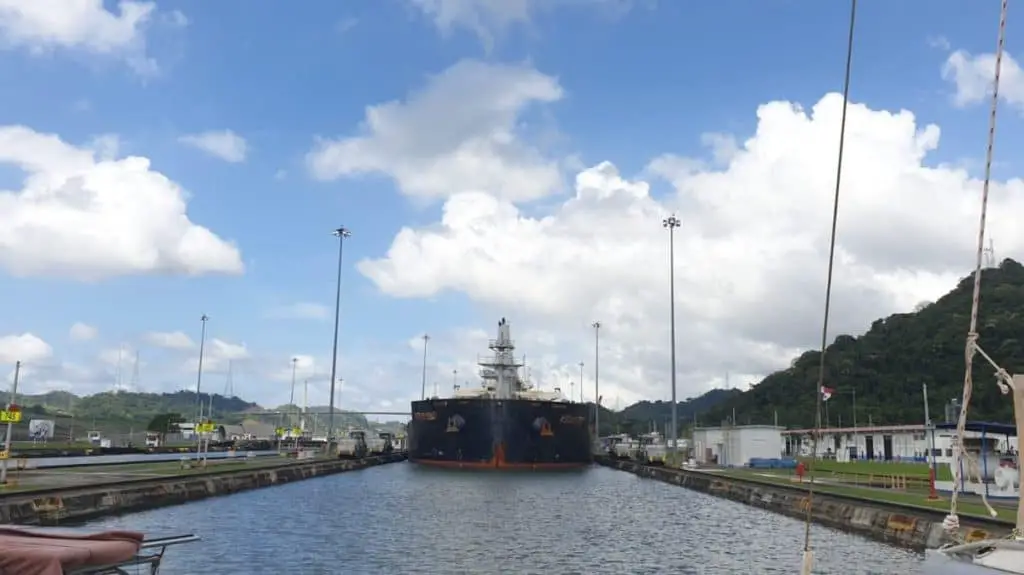
That’s an excellent way to make friends!
A cruising permit isn’t something specific for the Canal but applies for the entire country if you want to sail inside its borders. A fixed fee of 197 USD.
Inspection, this is when a Panama Canal comes to measure your boat and make sure you pay the right amount of moment and also get the proper permit.
Agent, if you want somebody to take care of all the hassles, then an agent might be a good option. Basically, what they do is take care of all contact with the local authority, help with payment, guide you through the Canal and foremost have a lot of experience.
The agent also covers the buffer fee, something you will have to pay to cover any cost incurred during potential damage during your transit. This will be returned to you once you exit the Canal.
Extra line and fenders, since the locks are enormous and the walls are mainly cement and other rough edges having big fenders and 125 ft lines, are needed. If this is something, you feel that your low on, you can rent or buy them from your agent or locally.
It might seem like a ridiculous amount of money to go through a canal, but considering the massive cost (several billion dollars) to make it, it kind of makes sense. Many ships are using it every day, it is also no strange thing that it represents 12% of Panama GDP.

How Long Does it Take to Sail through The Panama Canal?
Sailing through the 37 Mile long Panama Canal will take around 11 hours on a sailboat, if on a bigger ship, the official time is 8 hours.
This includes all of the six locks and crossing the artificial lake Gatun.
This might not seem only like a long day of sailing, but for everyone that has been in a lock, you know how stressful it can be, then imagine being in a lock on steroids, such as these.
Falling asleep probably won’t be an issue that night.
If you’re thinking, but wait, aren’t there 12 locks? Well yes, but you won’t have to travel through all twelve to get to the other side; there are some parallel locks to allow for more traffic and avoiding ques.
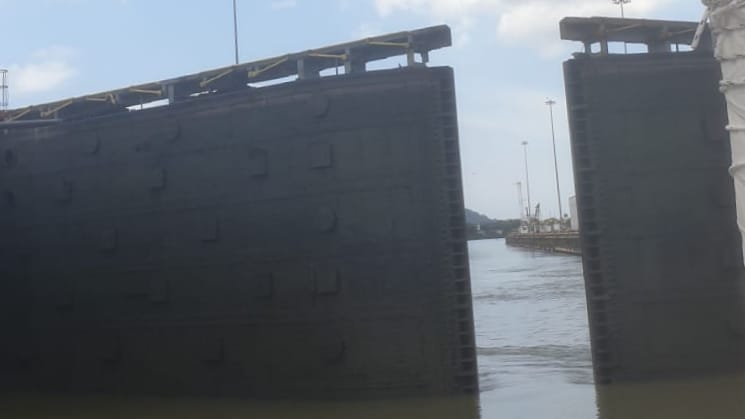
4 Tips On How To Safely Get Through The Panama Canal
Use An Agent
I think this is really useful, it is tricky enough with an advisor on board, but not having someone to ask all the questions that will arise just feels less safe. and if your lucky, the advisor might also be interested in telling you a short story about the places your pass. So basically, it includes a free travel guide.
Practice Before You Go
Make sure you have practiced with your crew before you leave for the locks. Practice how you want to quickly and tighten the lines. Figure out who does what and when.
When the advisor comes on board, make sure you two have a perfectly clear plan and understand each other.
Make sure you have a contingency plan, what do we do if X happens or Y. this is very important and makes small mistakes stay small and not fatal.
Keep Energy Levels High And Be Ready
Being on full alert for a full day of 11 hours might not be possible, but you definitely want to sum up your energy for the “lock-up” and “lock-down” procedures.
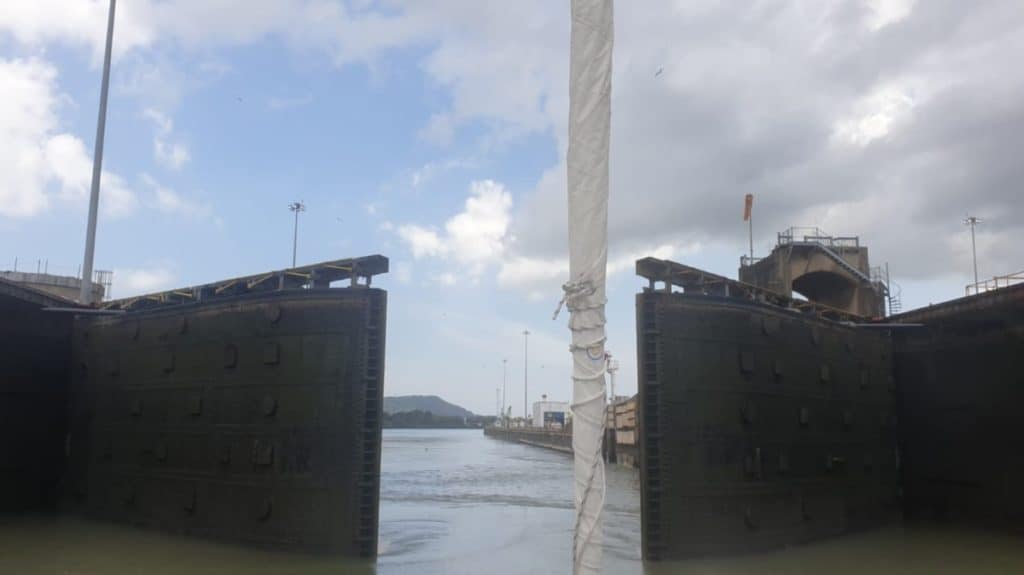
Things can change quickly; you might get orders from your advisor that needs to be executed now and not in 30 seconds, so make sure you are awake and ready to work.
To make this work bring many snacks and stuff to drink, i is a good idea to bring some energy drinks or coffee to drink a few minutes before a lock just to get ready.
Remember That You Are The Captain
Even if you get an agent that will support you with advisors, they are not all of the same calibers, and the responsibility of the ship always belongs to the captain.
Building trust between you and the advisor is essential since many devices may not be intuitive and sometimes feel wrong.
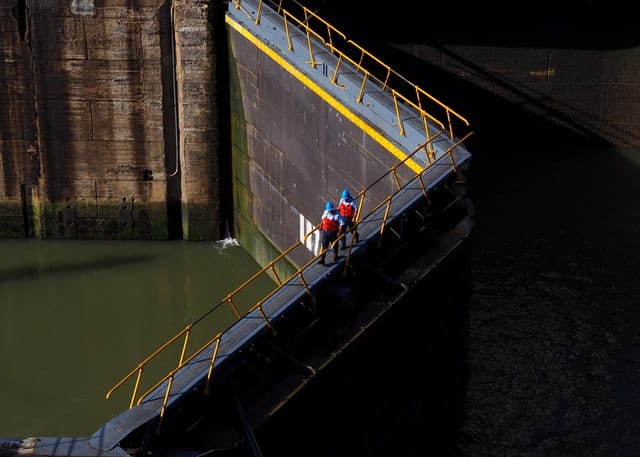
How Much Time Does The Canal Save?
Going through the Canal is not a must, there are other options, but this isn’t necessarily cheaper or safer, here’s how much time you will save and why.
Going through the Panama Canal will save you 44 days of sailing if averaging 7.5 Knots. The Canal crossing is 8000 Nautical miles shorter since there is no need to go around Cape Horn of South America.
One big time-saver is the vast amount of distance that needs to be covered if you opt not to go via the Canal. Eight thousand nautical miles or 9307 (land) Miles is a long way.
There are also other things to consider, such as safety, going around the horn is not a small feat, all through the Canal can be tricky, sailing through patches of ice and some of the worlds toughest weather patterns is not something to take lightly either.
The Cape Horn is where the Atlantic meets the Pacific, and this is not your ordinary family reunion, this is more of a “throwing-stuff-at-each other” Christmas dinner.
I’m trying to say that this is a place known for its sudden and very hard gusts of wind at the same time as to vast oceans meet, it’s bound to be an exciting trip.
And since most cruisers tend to stay in warm weather climates, there is also a need to update the boat and the crew’s wardrobe since the climate is much colder going that far south.
Not only will you need to have heaters on board, but instead of sailing in shorts and short and taking an occasional swim, you must now wear full winter and watertight gear.
And in a cold climate, everything becomes harder and less fun to do.
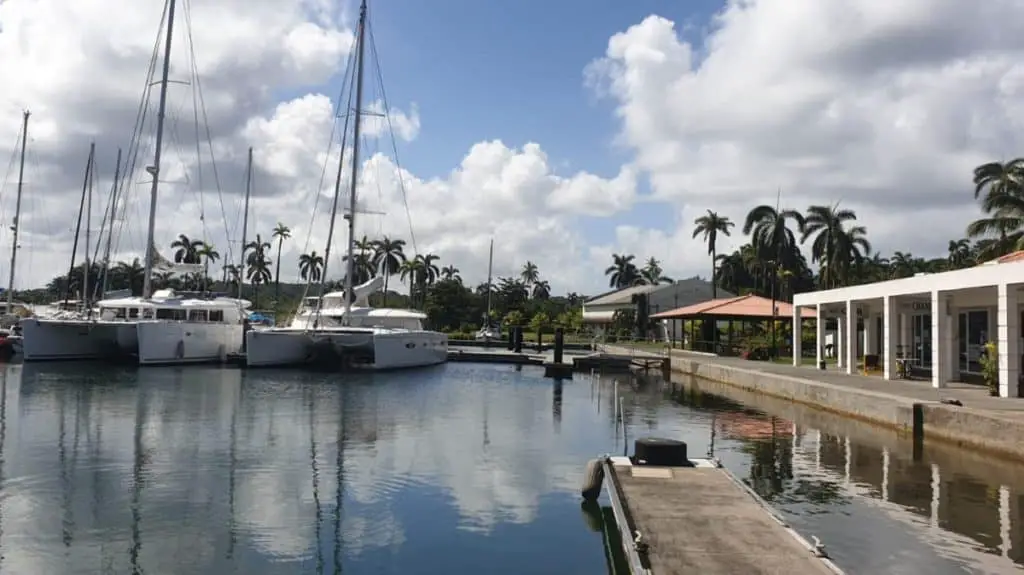
Why is The Panama Canal so famous
I would say that there are many reasons for this, for one it has a lot of history. The French started building it in 1881, and after widespread diseases, any many fatalities the money ran out.
When the US finished the project, it took it over 1903 and ended it around ten years later with the first boat passage in 1914. Just as now, the main incentive was shipping goods from the Atlantic to the pacific (and vice versa) faster and safer than before.
The US paid a total of USD 9,169,650,000 in today’s value to complete this engineering dream.
Why Use Locks and Not a Sea Level Canal?
The most intuitive way to build a canal is to dig a trench and fill it up with water, at least for us non-engineers. This was precisely what was proposed to President Roosevelt at the time.
But in 1906, when the Chief Engineer of the Panama Canal John Frank Stevens saw the river Chagres in full flood, he stated that the sea-level option is not viable. A lock system going up to, and then down from, the Gatun lake would be a practical option.
Using a sea-level system would bring far too much current and would be very hard, if not impossible, to transition safely.
The project resulted in both the largest dam, the Gatun dam, and the largest artificial lake, the Gatun lake, at the time.
Ways To Transit The Panama Canal
You can go in either direction and below is a shortlist of general guidelines when transiting and moving through the canals.
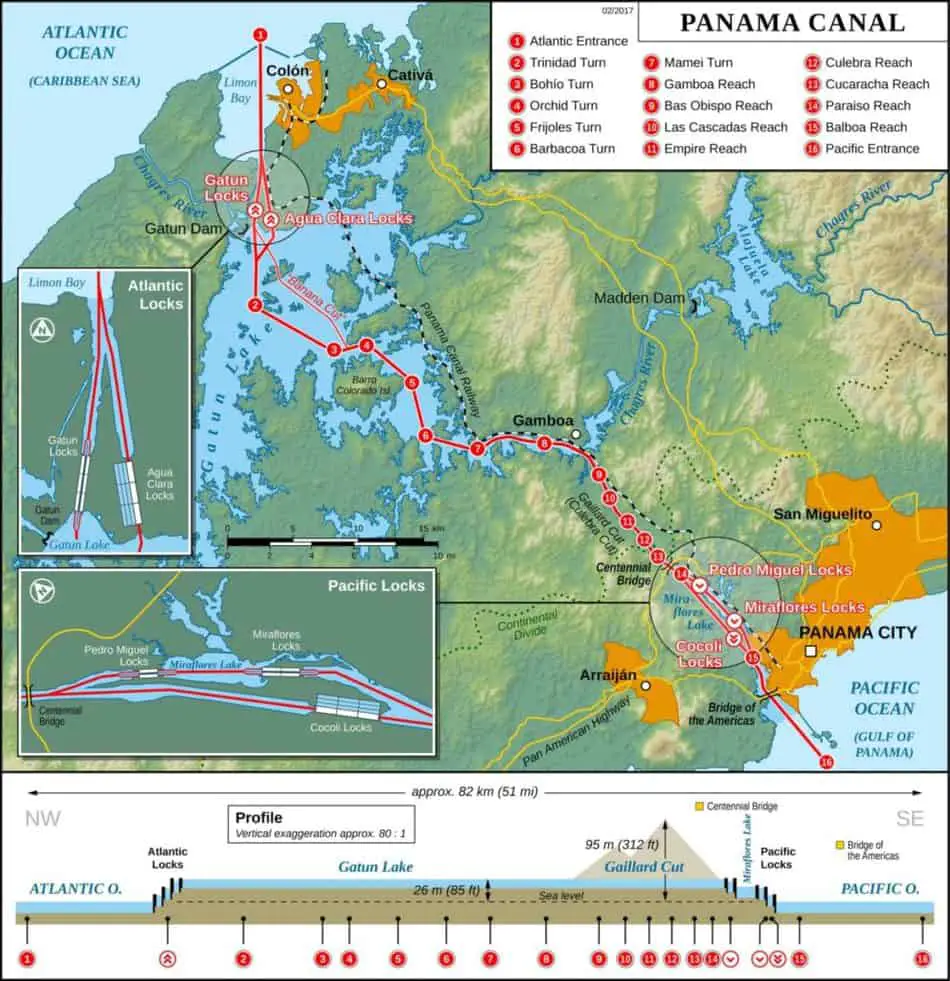
The first step is to anchor and get ready for the ACP to call you up and let you know that your time has finally come. And I say finally since many wait for days before they have a slot open that they can take.
Now you will transition through three locks taking you all the way up to the Gatún Lake, from here you have to options, either you anchor to about for the night.
If you’re on a fast boat that can do above 7.5 knots on motor, you might be able to complete it in one day.
General Rules When Locking UP
When locking up through the Panama canal, the big ships usually go first, and small guys stay in the back.
Since its time to fill the chamber with a lot of water, you can expect there to be powerful turbulence, allt his water will fill up the chamber in only 10 minutes.
When the journey upwards begins, make sure you have position yourself in the middle of the lock, thus getting out of the way from the tricky redirection of currents that occurs next to other objects such as the chamber walls or other ships.
Once the locks are open, you have a giant ship ahead of you, and when that beast wants to get going and the props start turning. You guessed it yours in the way of their prop wash.
This will create some confusing waters, and letting go of the lines to soon might not be your best option. Remember that you are still the captain and let go when you feel comfortable.
I find it easier to lock up since you will now feel the slack of the lines when the boat is moving up, and all you need to do is take up that slack, and you’re perfectly safe.
General Rules When Locking DOWN
When locking down, often the large vessels will now be behind you, thins means a couple of relevant things to you.
Firstly it’s nice to know that there is not much turbulence in the water, but some other effects are to be aware of. Since you are probably sharing space with other huge ships when the flood of water hits its hull, it will be redirected outwards, and outwards of the big boat is where you are.
This is something for the line handlers to be aware of; it might look all nice and calm, but make sure everyone is ready for the underwater currents that might grab hold of your hull.
This redirection also leads to a somewhat strong current of around 3-4 knots when the locks fill up.
Since you are now going down, it is crucial that line handlers be soft on their hands and let out enough line, so the boat doesn’t get lifted and too much weight is placed on the cleats if your ship is moving too close to the side of the lock then maybe its time to ease out a little.
Going Through the Canal as a Yacht or Raft?
If you hire an agent, chances are that they might take you and one or two other boats and make them into a raft. this will make you and your new friends tied together going up and down the locks but you will still be able to sail on your own in between.
This might feel a little awkward at first but is standard practice to ensure you have the safest possible transit.

Fun Facts About The Canal
- The most expensive trip through the Panama Canal: Norwegian Pearl 375,600 USD.
- The Cheapest trip through the Panama Canal: 0.36 USD Mr. Haliburton, swimming.
- The Largest vessel to transit the Panama Canal: Neopanamax Triton, 168 feet wide, 1,211 feet long.
